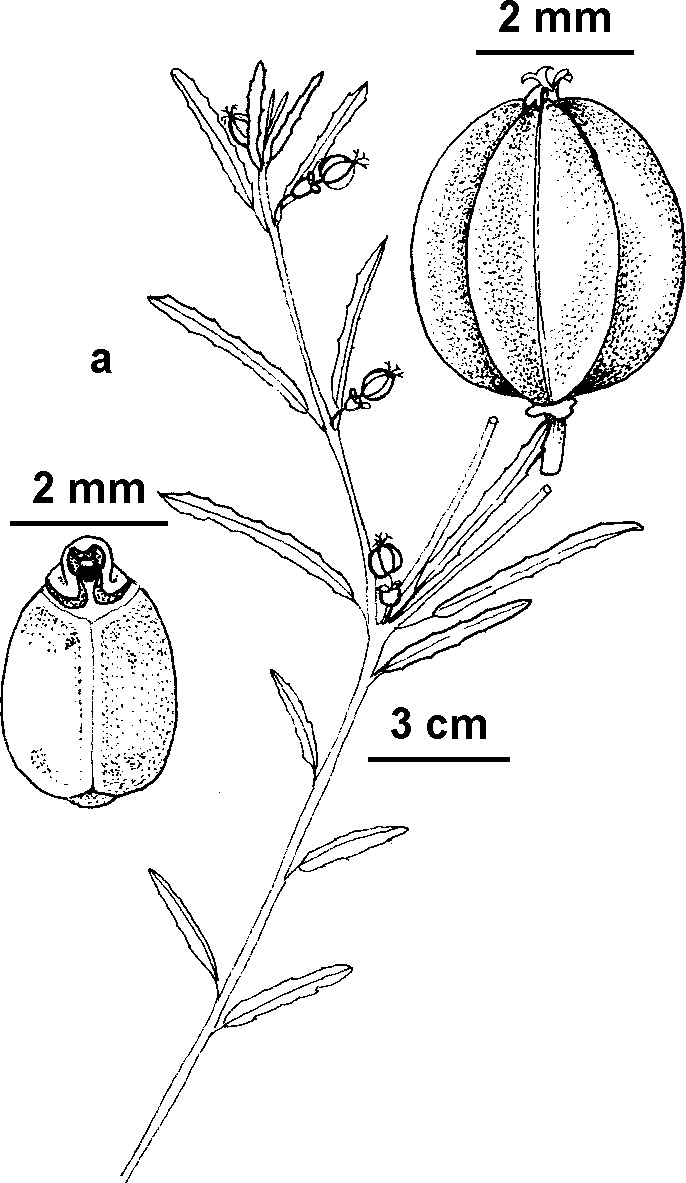Euphorbia tannensis subsp. eremophila
(A.Cunn. ex Hook.) D.C.Hassall Desert SpurgeErect annual or perennial subshrub, mostly 5–50 cm high, rarely more; lower stems and branches becoming woody; upper branches green, glaucous. Leaves alternate below, subopposite in upper parts, linear to narrow-ovate, 5–70 mm long, 1–7 mm wide, acute to obtuse, base cuneate, margins entire or serrulate; petiole to c. 4 mm long; stipules subulate, c. 0.2 mm long. Cyathia solitary, terminal or axillary; peduncles to c. 1 mm long; involucre campanulate, 1–2 mm long, lobes incurved; glands more or less elliptic, c. 1 mm long, yellow to red, margins entire, crenulate or palmatifid; male flowers usually 4 per fascicle at anthesis; female flowers with styles cleft to the middle into 2 filiform recurved stigmas. Capsule ovoid-globose, 4–5 mm long and wide, erect, keeled, smooth, green; seeds quadrangular-oblong, 2.5–3 mm long, smooth, wrinkled or granular; caruncle hat-shaped, yellow-brown. Flowers throughout the year.
MuM, VRiv, MSB, Gold. Also WA, NT, SA, Qld, NSW. Known in Victoria from only a few sites in the far north-west where found on sandhills and rocky cliffs overlooking the Murray River, and an outlying 1905 record purportedly from near Kerang.
Jeanes, J.A. (1999). Euphorbiaceae. In: Walsh, N.G.; Entwisle, T.J., Flora of Victoria Vol. 4, Cornaceae to Asteraceae, pp. 55–82. Inkata Press, Melbourne.
 Spinning
Spinning


